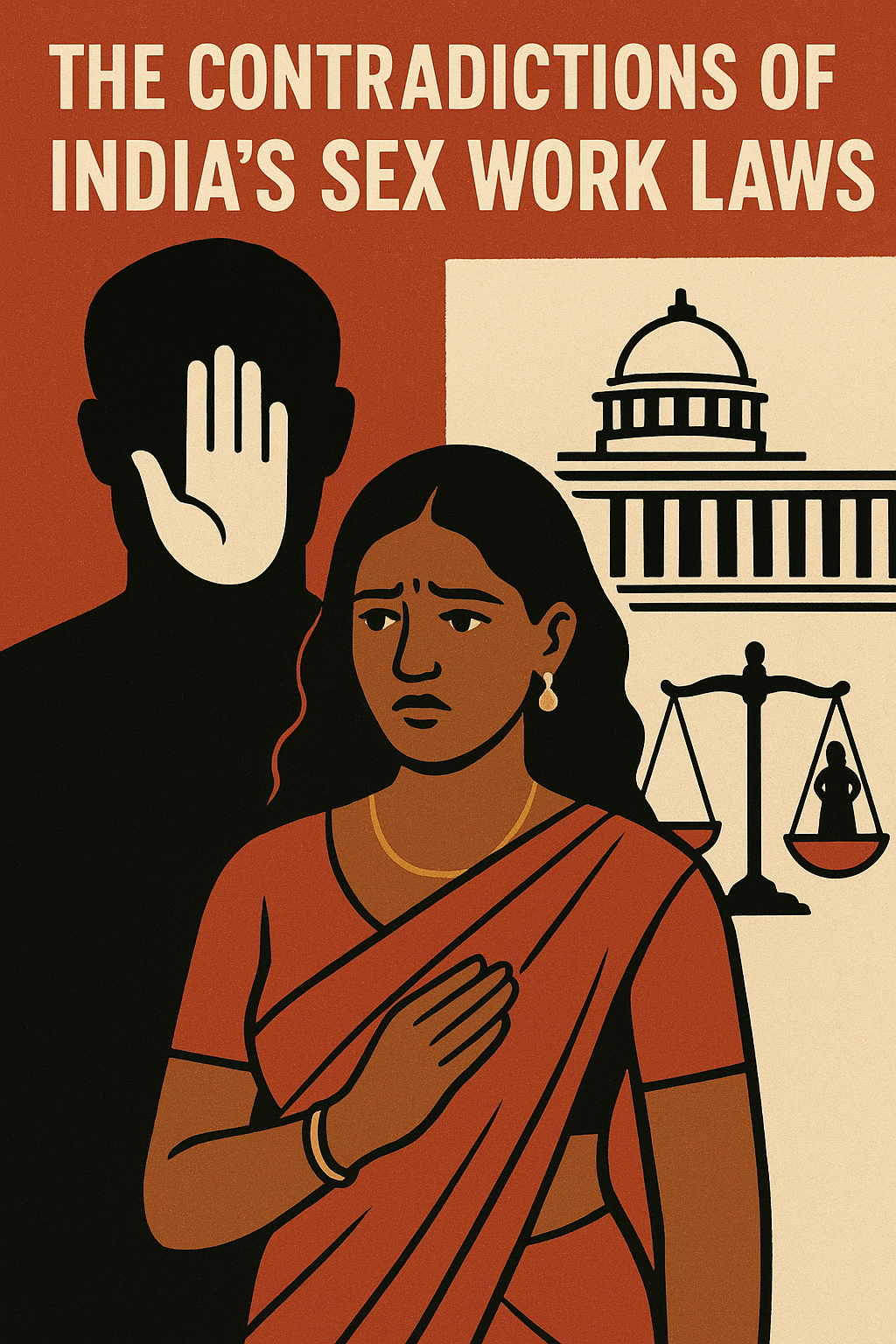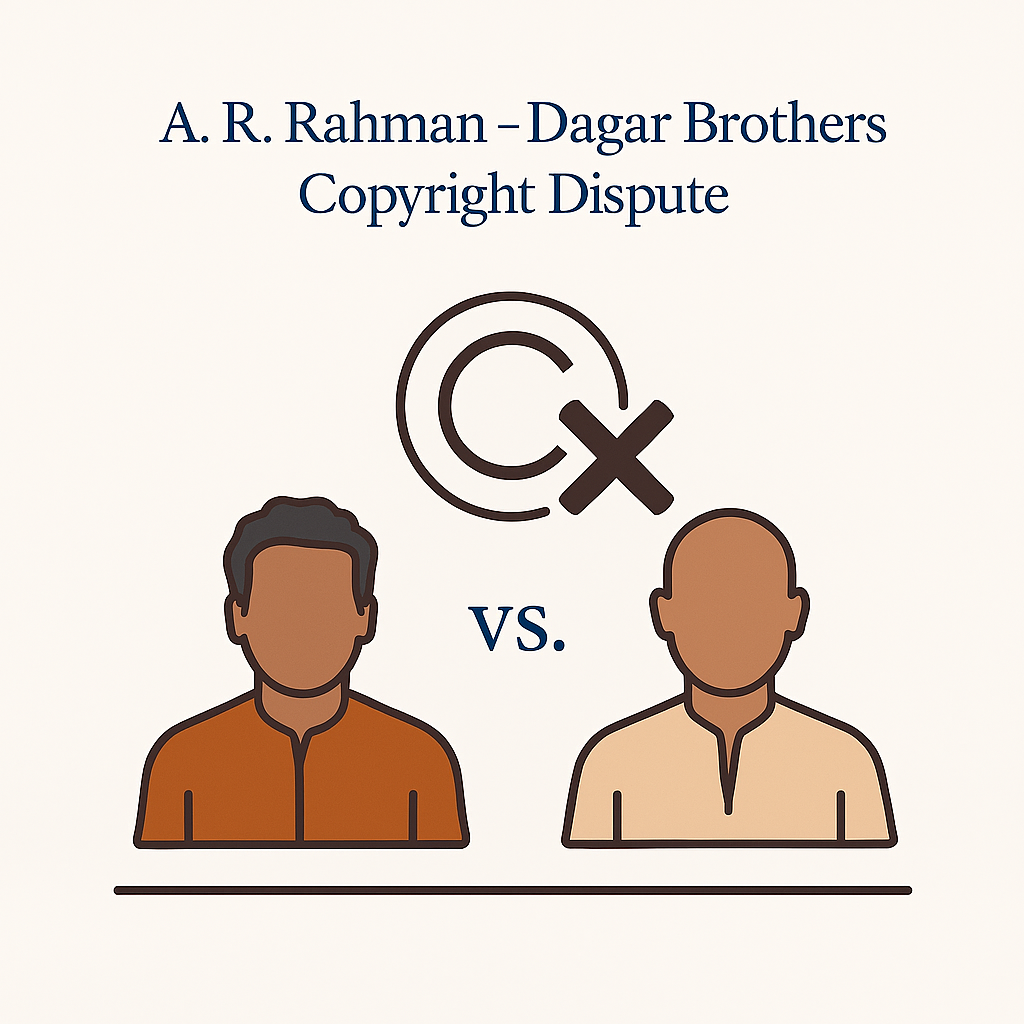



Author: Gaurisha Parashar
University: Kamkus College Of Law
In 2023, Padma Shri vocalist Ustad Faiyaz Wasifuddin Dagar sued composer A.R. Rahman and producers of Ponniyin Selvan 2 over the song “Veera Raja Veera.” The suit alleges that this film song copied the melody, rhythm and mood of the Dagars’ Hindustani classical “Shiva Stuti” (first recorded in 1978) without permission or the credit.1 The plaintiff claims he holds copyright in Shiva Stuti by virtue of an oral family settlement and seeks injunction, damages and recognition of the Dagars’ moral rights under the Copyright Act, 1957.2 Rahman and the producers deny wrongdoing, contending Shiva Stuti is a traditional Dhrupad piece, that lacks individual authorship and lies in the public domain.3 The Delhi High Court’s interim orders (April–May 2025) have already found a strong prima facie similarity, directing an ₹2 crore security deposit and remedial credits to the Dagars.4 This dispute raises fundamental questions regarding India’s classical music tradition in :
This case also raises questions about the adequacy of legal tests like “substantial similarity” and “lay listener” for evaluating musical works.
FACTS OF THE CASES
The disputed composition “Shiva Stuti” was a devotional Dhrupad piece created and performed in the 1970s by the Junior Dagar Brothers – Late Ustad Nasir Faiyazuddin and Ustad Nasir Zahiruddin Dagar. In 1978 they recorded it at the Holland Festival and later released it on CD.5 The Dagars’ composition was part of their gharana’s collection, but Shiva Stuti itself was allegedly an original arrangement (with the dragged “g” swara in Raga Adana) unique to them6.
Wasifuddin Dagar, a disciple of the brothers and awarded Padma Shri, claims that all copyrights in his father’s and uncle’s original works -including Shiva Stuti -passed to him.7
By contrast, Rahman’s “Veera Raja Veera” (from the 2023 film Ponniyin Selvan 2) is a contemporary song with Tamil lyrics. The plaintiff alleges that its taal, swaras (notes) and bhava (mood) during the opening ālāp and composition sections are virtually identical to Shiva Stuti, except for new lyrics.8 In his petition (CS(COMM) 773/2023) Dagar sought a permanent injunction, an order removing the allegedly infringing parts, damages, and that Rahman and the producers acknowledge the Dagars’ authorship as a matter of moral right.9
Rahman and Madras Talkies (Mani Ratnam’s production house) have rejected the claim. They argue that Shiva Stuti is a piece of traditional Dhrupad music -in fact, the lyrics come from a 13th-century hymn -and thus the specific musical outline is part of the public domain. The defense maintains that Shiva Stuti has been orally transmitted, and its common rāga elements cannot be monopolized; in their view, Veera Raja Veera is an original work merely inspired by that tradition.10 They have called the suit a “fishing expedition” for publicity.
INTERIM ORDERS OF THE DELHI HC
On April 25, 2025, a Single Judge of the Delhi High Court (Justice Prathiba M. Singh) granted partial interim relief favoring Dagar. The Court found the opening alaap and melody of Veera Raja Veera is so similar to Shiva Stuti that an ordinary (lay) listener would regard the two as identical in structure. As a result, the court granted the following interim relief:
However, on May 6, 2025, the Delhi HC Division Bench stayed parts of the Single Judge’s order. The stay means Rahman and the filmmakers no longer must display the new credit slide on platforms (and are not liable for the litigation costs awarded) for the moment. The ₹2 crore deposit order remains in effect. The main suit will be heard on May 23, 2025.
INDIAN COPYRIGHT LAW
Under the Indian Copyright Act, 1957, a musical composition must be an “original” work of authorship to qualify for protection (Section 13).
The author of a musical work is entitled to statutory economic rights (like reproduction, adaptation and performance) and, independently, moral rights (the right of paternity/attribution and integrity) under Section 57.13
Indian law defines a musical work as a composed melody (Sec. 2(d)).14 Importantly, originality in music does not require novelty of idea but original expression. Courts have long held that even works rooted in oral or traditional culture can be original if a composer contributes a distinctive arrangement of notes. For example, in Indian Performing Right Soc. v. Eastern India Motion Pictures (1977), the Supreme Court held that reliance on folk or traditional inspiration does not by itself disqualify a work from copyright.
In the Dagar v. Rahman case, the Delhi HC found Shiva Stuti to be an “original composition” because the Dagars’ particular selection and ordering of Raga Adana swaras -notably the drawn “g” note -differed from standard forms. In other words, the Dagars had fixed a unique pattern (“arrangement”) of common musical elements, and that micro-level creativity met the threshold of originality. The Court rejected the notion that simply because a raga is ancient, any melody in it is unprotected.
Authorship vested in the Dagars was also assumed on the record: the court relied on historical recordings, published CDs and label agreements dating to 1978 to establish that Faiyazuddin and Zahiruddin Dagar composed Shiva Stuti. Absent any evidence of a prior composition, the DJ brothers were accepted as the creators. (In India, a registered copyright is not mandatory, but demonstrating originality and fixation is easier when there is a tangible recording.15 The Court noted that the Dagars’ heirs met these standards.
Regarding duration, Indian copyright in a musical work typically extends for the author’s life plus 60 years.16 Since the Dagar brothers died in 1989 and 1994, their musical compositions (if covered) would remain protected through mid-century. (By contrast, ideas, ragas and public-domain hymns -like the 13th-century text -are not protected.)
SUBSTANTIAL SIMILARITY
To establish infringement, Indian courts compare the allegedly infringing work with the original, focusing on substantial similarity of protected elements. The Delhi HC applied the familiar “lay listener” test: would an ordinary person find the two works similar in their essential composition? Here it concluded that Veera Raja Veera’s core melody and rhythm, especially in the opening alap and subsequent tune, were “not merely based on or inspired by” Shiva Stuti but “identical” in musical structure, save for lyrical changes.
Copyright law generally excludes unoriginal “scènes à faire” – elements that are standard to a genre and thus not protectable. 17 SpicyIP commentators note the court acknowledged that some filtering of common raga elements is necessary.
However, the interim order focused on the combination of notes that was specific to Shiva Stuti and its impression on the ear. In practice, the Court effectively treated the Dagar Brothers’ unique arrangement as the protectable “original expression” to be compared against Rahman’s tune.
The Court treated the melodic copying as sufficient at first pass. If Rahman’s work is deemed a derivative or adaptation of Shiva Stuti, then under Section 1418 of the Act he would have needed authorization from the original copyright owner to use that material.
MORAL RIGHTS
A central issue is the Dagars’ moral rights as authors. Section 57 of the Copyright Act grants authors the right to claim authorship of their work and to restrain or claim damages for any distortion or mutilation of it. Crucially, moral rights survive assignment of economic rights and even the author’s death. Here, the Dagars’ heirs asked that Rahman acknowledge their authorship in the film’s credits. The Single Judge agreed that granting a credit slide was the “minimum” remedy to uphold the Dagars’ paternity right.
The order explicitly invoked Section 57: it directed that all online platforms display the credit “based on ‘Shiva Stuti’ by Late Ustad N. Faiyazuddin Dagar and Late Ustad N. Zahiruddin Dagar”.30 If the suit ultimately finds infringement, the Dagars may still claim moral relief (credit and/or damages) as a remedy. In practical terms, this dispute has underscored the importance of artistic credit in India.
CONCLUSION
The case of Dagar v. A.R. Rahman is not merely about two songs or two artists- it is a symbol of the evolving tension between classical heritage and modern expression, between copyright protection and cultural borrowing in India. At its core, this case invites us to rethink what originality truly means in a musical tradition where compositions are often passed down orally, evolved over generations, and rooted in collective cultural memory. Whether Rahman’s composition amounts to infringement will depend on the court’s technical analysis of musical similarity, intent, and commerciality.
However, the real value of the case lies in its ability to ignite discussion on what originality means in a tradition-based music culture, and how copyright law must adapt to protect creators without choking innovation. one that respects both the past and the present. Whatever the outcome is, the case will likely shape the boundaries of fair use, authorship, and ethics in the Indian music industry- making it a landmark moment in Indian copyright law.